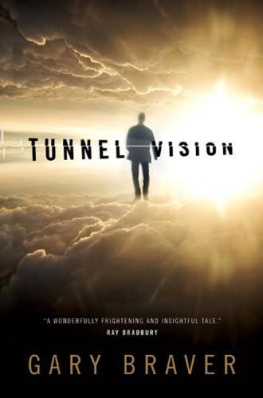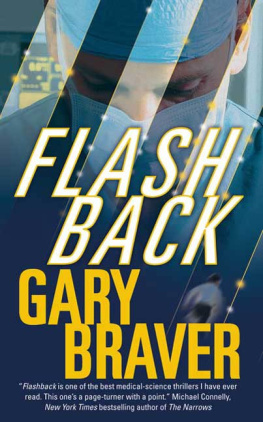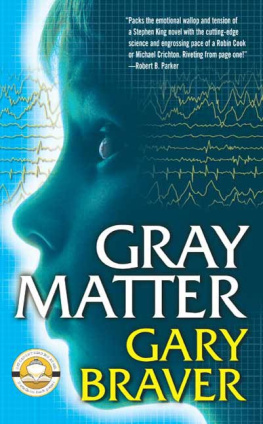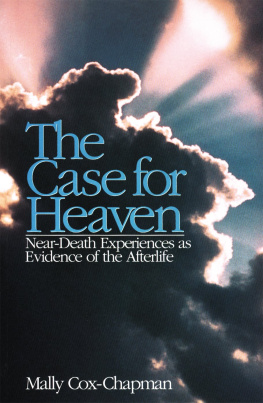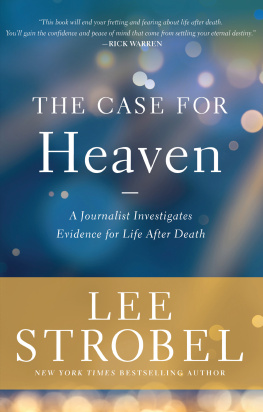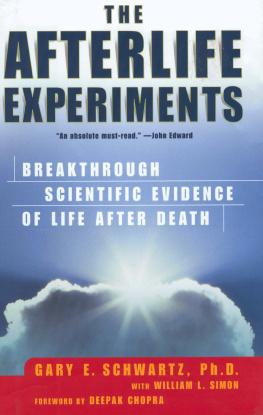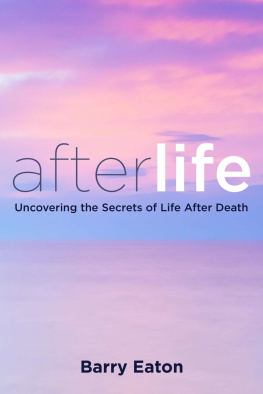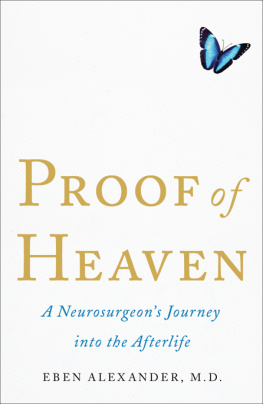
IN MEMORY OF ROBERT B. PARKER.
I MISS YOU, OLD FRIEND.
ACKNOWLEDGMENTS
Several people have helped me with technical matters in the writing of this book, and I would like to thank them for their generous time and expertise: Dr. James Stellar, provost of Queens College; Dr. James F. English, Mount Auburn Hospital, Cambridge, Massachusetts; and Karen Zoeller, R.N., Massachusetts General Hospital. Thanks also to Cathie Gould for her insights on spirituality.
One book that was indispensable in writing this novel is The Near-Death Experience: A Reader, edited by Lee W. Bailey and Jenny Yates (New York: Routledge, 1996).
Also, a special thanks to Kathy, Nathan, and Diamond Dave Goshgarian, my ace in the hole.
As ever, thanks to my editor, Natalia Aponte, and my faithful agent, Susan Crawford.
Lord, I do believe; help me in my unbelief.
MARK 9:24
CONTENTS
PROLOGUE
THREE YEARS AGO
PLYMOUTH, MA
Karen Wells was at the computer behind the ER desk at Jordan Hospital when a call arrived in from an ambulance unit. It was nearly three A.M. , and EMTs were bringing in an unidentified male about fifty years of age with minimal vital signs, possible cardiac arrest. She alerted the other nurses, the on-duty physician, Dr. Brian Kennedy, and two residents. They readied an empty cubicle specially equipped for cardiac patients.
It had otherwise been a slow nighta couple of victims of minor accidents, a drug overdose, a sprained foot, an elderly woman being treated for acute diarrheaatypical for a Saturday night in spring. Just two weeks ago the place was bedlam, with a packed waiting room and patients from infants to seniors in various states of distress. The ward was so quiet, it was almost spooky. So the possible cardiac would get fast and full attention.
Within seven minutes of the call, two paramedics burst into the ER with a man unconscious on a stretcher in full CPR mode. They rolled him into the bay, where the resuscitation team transferred him to a bed, intubated him in seconds, and wired his chest to an EKG machine.
Come on, guy. Hang in there, the EMT said, still performing CPR.
Karen hooked him up to a blood pressure cuff while another nurse inserted an IV to his arm. Shit. Seventy over palp.
I cant get a pulse, said Barbara, another nurse.
The EKG showed agonal rhythmslow, irregular complexes often seen as the heart dies.
Come back to me, buddy! the EMT shouted.
Paddles! Dr. Kennedy said.
Instantly, they slammed his chest with four thousand volts. The body lurched upward, but still no regular heartbeat, no pulse. Nothing.
They continued pumping and paddling the man until it was clear they could get no electromechanical activity at all. Dr. Kennedy then jammed a cardiac needle of epinephrine between the mans third and fourth rib and directly into the heart. No response.
They continued the CPR, and the doctor called for another intercardiac injection. Karen pushed a second needle back into the right ventricle of the mans heart and depressed the plunger, sending another bolt of epinephrine into him.
Again, nothing. No crisp spikes on the EKG. No pulse. No obtainable blood pressure. Respiration negligible. Body temperature was eighty-two. His skin had assumed the bluish, mottled look of a dead man.
Was he this cold when you found him?
Yeah.
Was he breathing?
Hard to tell. His BP was seventy over palp, but he had a pulse. I swear.
Well, he hasnt got one now, Karen said.
We worked on him all the way over.
Where did you find him?
Some kids spotted him on the side of a road near White Cliffs and called 911, and we got the dispatch.
Any booze containers or drugs with him?
Not that we found. But he looks like street.
It was the face of dozens of others she had treated over the yearsweathered maps of lives gone amokfiftyish, unshaven, mottled skin, pupils dilated, eyes bloodshot. A face interchangeable with chronic druggies and alcoholics. He was dressed in black pants that looked relatively new. His top had been removed by the EMTs and sat in a belongings bag. His feet were bare and raw.
She could find no needle tracks in his arm. However, on the back of his right hand was a pinprick over a vein. Looks like he injected himself.
That, or hed been hooked up to an IV line.
No, he looked like heroin to Karen. His skin resembled gray Naugahyde and was covered with scabs and nicks, as if insects had feasted on him while he was exposed to the elements.
Hes gone, Kennedy said. Time of death three twenty-five.
Kennedy left, and they unhooked the man from the monitors. As Karen put away the equipment, she barely registered how jaded she had become to dead people. In her seventeen years in ER, she had seen every manner of death that could claim human beingscardiac arrest, drowning, domestic abuse, gang shootings, drug overdoses, stabbings, fire, mangling car crashespeople alive but so disfigured that you had to check for limbs to be certain the carnage was human. When she was in her twenties, it had been much harder to detach herself from the blunt reality of deathto view the dead not as human beings but as bodies, husks of whom they had been. She would look at victims and think that not too long ago they were living, breathing, thinking entities, animated, ensouled with whatever it was that defined life. And now they were tissue, organs, and bone in the process of decaying.
As consolation, she told herself that the real person had departed, gone to a better place where the suffering had ended. But even after seventeen years of ER nursing, it saddened her when the victim was youngeven this guy, who died far short of his three score and ten. Sadder still that he had no identity, no name she could put on the toe tag.
She and Barbara cleaned him up. They put his shoes and shirt into a belongings bag and laid the bag on his thighs. They disconnected his monitors and left in the IV, the arterial lines, and the intubation tube for postmortem confirmation that nothing they did in the ER had caused his death.
Because only a physician could legally pronounce a patients death, Karen left to check her other patients. When she returned, Dr. Kennedy had completed the death certificate. The official time was listed as 3:25 A.M. Karen entered the data into the computer. Later, the body would be delivered to the medical examiners office, where it would be held until identified and autopsied.
Karen prepared the toe tag and headed into cubicle four, where their John Doe had been left on the gurney. The gurney was still there and the lines were still connected to the IV and monitors, but the body was gone.
Karen shot out to the desk. Wheres the dead guy in four?
Barbara looked up from her paperwork. Huh?
The John Doe. Hes gone. Did someone move him?
No. What are you talking about?
Barbara shot down the hall with Karen to find the other nurses. Nobody had moved the man. And Dr. Kennedy said he hadnt touched the body. The same with the orderlies. Who would have taken him?
You think somebody took him? Barbara asked.
Well, he didnt walk out on his own. Somebody stole him.
Karen ran to the reception desk in the emergency room lobby. The waiting area was empty, and the desk attendant had just returned from the restroom and had seen no one wheel out a body.
Karen buzzed security, and in seconds a guard showed up. Weve got a missing body, she said, and explained what had happened.
Who the hell would steal a corpse? the guard said.
Thats my question. Then Karen went into the nurses office, where the video security system was stored. She typed in 3:20 A.M. and hit the playback button.
Next page
